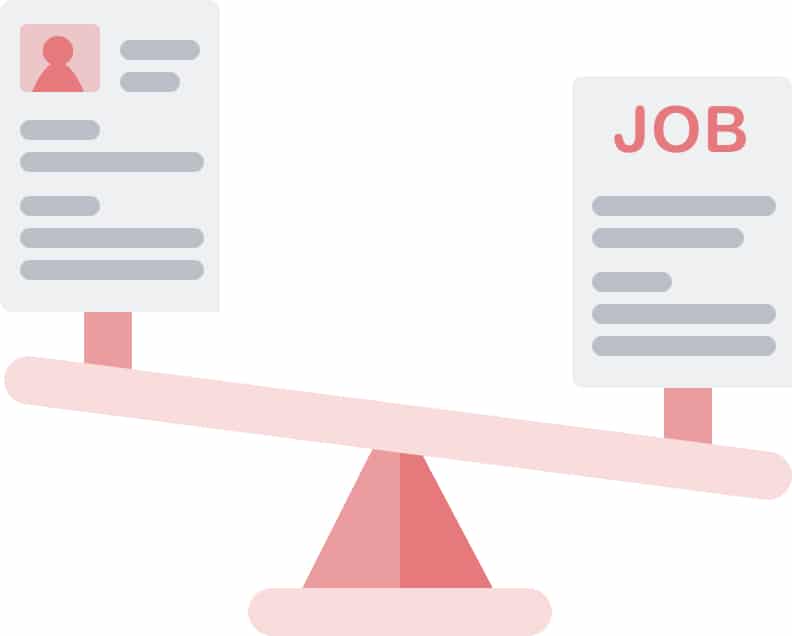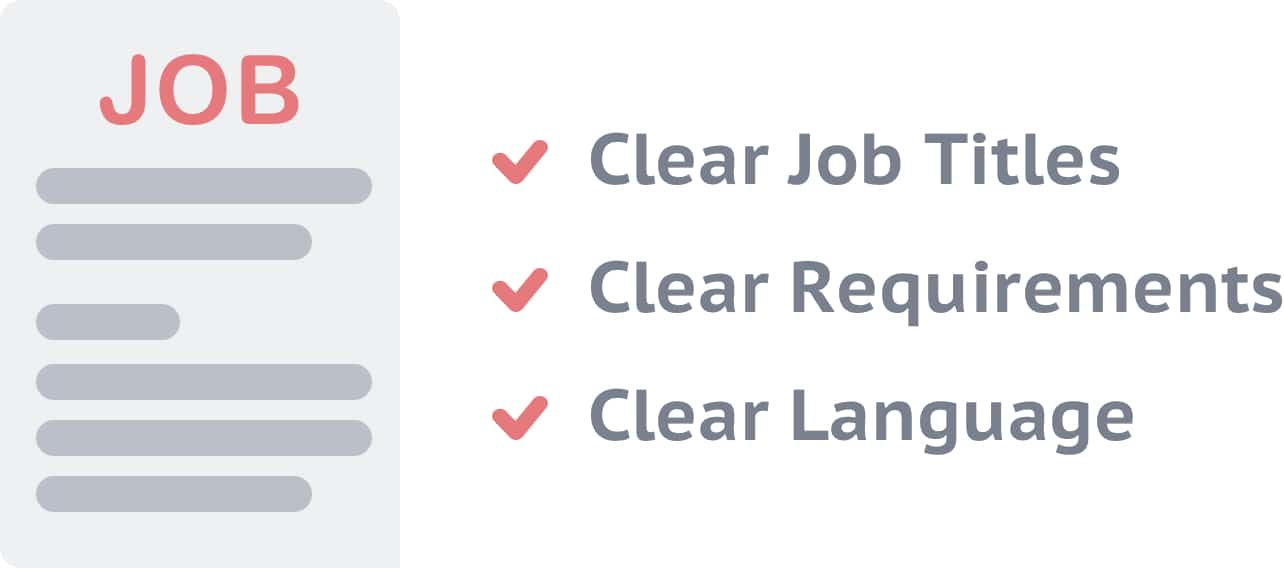The advent of software like Textio™ and Gender Decoder has helped highlight unconscious bias in job descriptions. However, language is only part of the story, and job description software should highlight more than just language.
Inclusive language certainly helps break down recruiting barriers for underrepresented groups. But its impact is muted compared to the rest of the story─inclusive content.
Inclusive language can encourage more qualified job seekers to apply and widen your candidate pool overall. But content issues in your job descriptions can create problems that render your language moot.

The job title is a perfect example. It’s the most important piece of the story and can make or break your job description, for a couple of reasons.
First, job titles are how job seekers find your job on job boards and on the career page of your website. Just like Google or Bing, job board search engines use job titles as the keywords for matching searches with job listings.
Second, job seekers use job titles to help determine whether they qualify for a position. Seemingly innocuous words like ‘Senior’ that help you level internally as the company grows can mean something different outside the company. If a job seems more senior than a candidate views themselves, they may skip your job listing without even reading it.
Other things that can discourage qualified candidates include unnecessary degrees or professional certifications that can trigger confidence gaps, as well as experience ranges that are too broad (e.g., ‘3 – 10 years’). The absence of simple things like perks language and a diversity statement can also deter qualified candidates.
The hiring process imbalance

As things are, companies are dictating the terms of the hiring process, keeping job seekers at a disadvantage.
Hiring teams expect resumes to be clear and concise enough to scan in seconds. Yet we drop a laundry list of responsibilities and qualifications into job listings without considering length or clarity.
We use job descriptions to talk exclusively about what we want from candidates. But we don’t tell them where their role fits into the organization or what options they have for training and career growth.
We use internal names, acronyms, or abbreviations and hide behind corporate jargon and formal language. Or we write incomplete, typo-filled job descriptions. Then we use the same document for multiple jobs, signaling that the hiring team is overloaded or doesn’t care. Meanwhile, we expect resumes to be immaculate and candidates to be the epitome of professionalism.
At best, these types of issues drive away qualified candidates. At worst, they signal to all job seekers that your company doesn’t value fairness and that your hiring process may be as messy as your job descriptions. To historically underrepresented groups, bad job descriptions can signal a hiring process and overall work environment that isn’t inclusive.
Balancing the hiring process through job descriptions

To fix the imbalance, we need to include everyone and exclude no one, regardless of demographics or background. We need to be understanding and empathetic of the unique journeys that candidates take to our job listings.
That means covering the job description basics well and writing job posts that are clear and searchable for candidates who aren’t familiar with our company and don’t know someone for a referral. It means concise job descriptions that respect candidates’ time as much as our own.
It means relevant requirements tailored specifically to the job so we can be transparent about the basis for our decisions. And it means conveying exactly what we offer and where the role fits into our company’s organizational chart.
Inclusive content, not just language
Searchable job titles and unambiguous requirements. Job descriptions that are concise, clear, and error-free. Empathy for everyone’s unique journey.
While the language we use has to be welcoming to candidates from a wide variety of backgrounds, we need more than inclusive language. We need inclusive content to create truly inclusive job descriptions.
